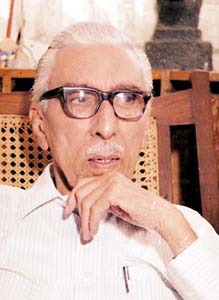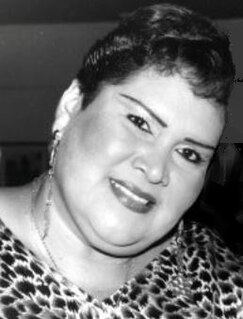Related Research Articles
Gloria Guardia was a Panamanian novelist, essayist and journalist whose works received recognition in Latin America, Europe, Australia and Japan. She was a Fellow at the Panamanian Academy of Letters and Associate Fellow at the Spanish Royal Academy, the Colombian and the Nicaraguan Academy of Letters
The Sandinist Television System was a television network in Nicaragua, owned and operated by the government from 1979 to 1990.

Pablo Antonio Cuadra was a Nicaraguan essayist, art and literary critic, playwright, graphic artist and one of the most famous poets of Nicaragua.
Julio Valle Castillo, was born in Masaya, Nicaragua. He is a Poet, painter, and a literature, and art.

Rosario María Murillo Zambrana is the vice president and first lady of Nicaragua. She is married to the current president Daniel Ortega. She was also first lady when, in 1985, her husband became president six years after the Sandinista National Liberation Front (FSLN) overthrew the Somoza dynasty. Murillo has served as the Nicaraguan government's lead spokesperson, government minister, head of the Sandinista Association of Cultural Workers, and Communications Coordinator of the Council on Communication and Citizenry. She was sworn in as vice president of Nicaragua on 10 January 2017.
Omar D'León is a well-known Nicaraguan painter and poet.
La Esmeralda or Escuela Nacional de Pintura, Escultura y Grabado (ENPEG) is a Mexican art school founded in 1927 and located in Mexico City.

Luis Arenal Bastar was a Mexican painter, engraver and sculptor. He was a founding member of the Liga de Escritores y Artistas Revolucionarios, the Taller de Gráfica Popular and the Salón de la Plástica Mexicana. In addition, he created murals and other monumental works in Mexico City and Guerrero.

Gilberto Aceves Navarro was a Mexican painter and sculptor and a professor at the Escuela Nacional de Artes Plásticas and Academy of San Carlos. There have been more than two hundred individual exhibits of his work, with his murals found in Mexico, Japan and the United States. He received numerous awards for his work including grants as a Creador Artístico of the Sistema Nacional de Creadores de Arte, Premio Nacional de Ciencias y Artes and Bellas Artes Medal from the Instituto Nacional de Bellas Artes.

Ramón Alva de la Canal was a Mexican painter, illustrator, and educator, one of the pioneers of the Mexican muralism movement.
Carlos Martínez Rivas was a Nicaraguan poet, most famous for his poem "El paraíso recobrado", a love poem first published in 1944.

Pedro Francisco Lira Rencoret was a Chilean painter and art critic, who organized exhibitions that led to the establishment of the Chilean National Museum of Fine Arts. He is best known for his eclectic portraits of women.

Sofía Montenegro Alarcón is a Nicaraguan journalist, social researcher, and feminist. Montenegro's family were militarily aligned with the Somoza forces, but her feminist and Marxist studies moved her to join with the opposition to the regime. She fought in the Sandinista Revolution and though initially supportive of the Sandinista Party, later became an outspoken critic, saying it had moved to the right. She served as an editor of various divisions of the official Sandinista newspaper, Barricada, until 1994, when she founded the Center for Communication Research (CINCO) as an independent research organization free of government influence. She has written broadly on power, gender, and social interaction.

Marina Cárdenas (1946–2014) was the stage name of Emma Marina Baltodano Espinales who was also called La Gordita de Oro or Queen of Nicaraguan bolero. She was a Nicaraguan bolero singer, who received more than 400 awards in her lifetime, including the Medal for Artistic Excellence from the Ministry of Culture of Nicaragua.

Edith Grøn was a Danish-born Nicaraguan sculptor. She is considered to be the most significant 20th-century Nicaraguan sculptor. Her works are featured in public spaces throughout Nicaragua and abroad.

Mary Coco Maltez de Callejas was a Nicaraguan feminist, teacher and politician. She was a founding member of both the Union of American Women and Ala Femenina, serving as the vice president of the latter organization from its founding in 1955 to 1971, when she became President. She was one of the first three women to run for and be elected to the Chamber of Deputies in 1957. After her initial election, she served in the National Assembly until 1979. Between 1969 and 1979, she served as the Minister of Education. In her latter years, she participated in the Alliance of Pan American Round Tables.

Roser Bru Llop is a Spanish-born Chilean painter and engraver associated with the neo-figurative art movement.
Alicia Avilés is a Costa Rican educator and activist. Avilés worked for 12 years as an elementary school teacher in Nicaragua. After settling in La Carpio, she helped create an arts organization, Sistema Integral de Formación Artística para la Inclusión Social (SIFAIS). Avilés is the community director of SIFAIS.
The Nicaraguan Chess Championship is currently organized by FENANIC, the national chess federation of Nicaragua. After the first championship was held as a match in 1956, subsequent editions have been held as tournaments in multiple categories, with the winner of the top category becoming the national champion.
Nicaraguan nationality law is regulated by the Constitution, the General Law for Migration and Foreigners, Law No. 761 and relevant treaties to which Nicaragua is a signatory. These laws determine who is, or is eligible to be, a citizen of Nicaragua. Nicaraguan citizenship is typically obtained either on the principle of jus soli, i.e. by birth in Nicaragua; or under the rules of jus sanguinis, i.e. by birth abroad to a parent with Nicaraguan nationality. It can also be granted to a permanent resident who has lived in the country for a given period of time through naturalization or for a foreigner who has provided exceptional service to the nation.
References
- 1 2 3 4 5 "Nicaragua: Establecimientos e instituciones culturales" [Nicaragua: Establishment and cultural institutions]. Organización de Estados Iberoamericanos (in Spanish). Madrid, Spain. n.d. Archived from the original on 14 March 2017. Retrieved 17 September 2017.
- ↑ Agüero, Arnulfo (26 July 2008). "Escultores de lo monumental" [Sculptors of the monumental]. La Prensa (in Spanish). Managua, Nicaragua. Archived from the original on 17 September 2017. Retrieved 17 September 2017.
- ↑ González, Marta Leonor (28 February 2017). "Edith Gron, genio y arte" [Edith Gron, genius and art]. La Prensa (in Spanish). Managua, Nicaragua. Archived from the original on 9 March 2017. Retrieved 17 September 2017.
- 1 2 Manfut P., Eduardo (10 October 1998). "Datos Biográficos del Pintor: Rodrigo Peñalba" [Biographical data of the painter Rodrigo Peñalba]. El Nuevo Diario (in Spanish). Managua, Nicaragua. Archived from the original on 11 August 2016. Retrieved 17 September 2017.
- ↑ Michilini, Sergio (4 October 2011). "La Escuela Nacional de Arte Público-Monumental de Managua" [The National School of Public-Monumental Art of Managua]. Varese News (in Spanish). Varese, Italy: La Bottega del Pittore. Archived from the original on 2 July 2017. Retrieved 17 September 2017.
- ↑ "Creación del Centro Nicaragüense de Enseñanza Artística Pablo Antonio Cuadra" [Creation of the Pablo Antonio Cuadra Nicaraguan Center for Artistic Education]. Asamblea Nacional de la República de Nicaragua (in Spanish). Manaugua, Nicaragua: Presidente de la Republica de Nicaragua. 15 December 1997. Retrieved 17 September 2017.